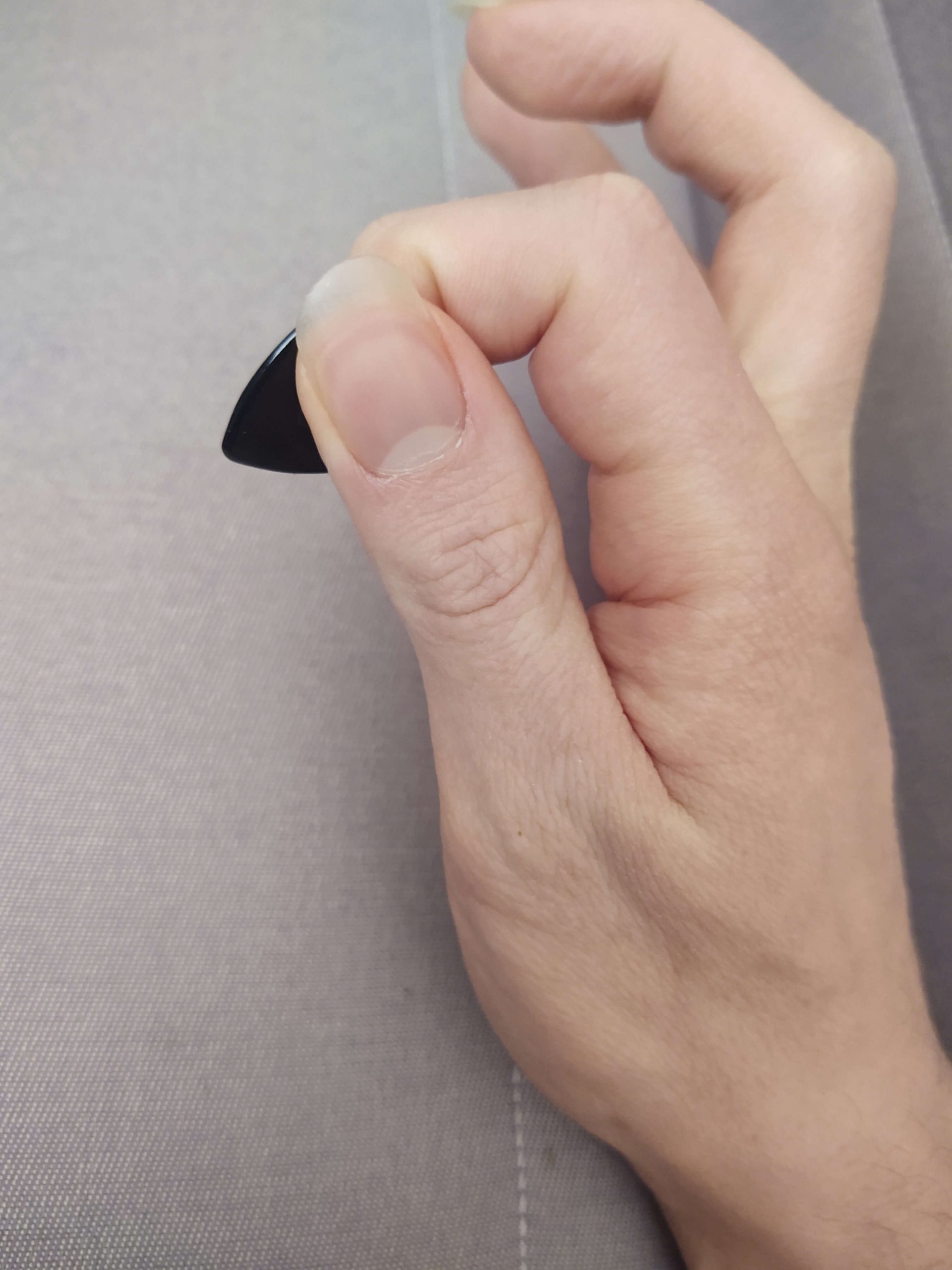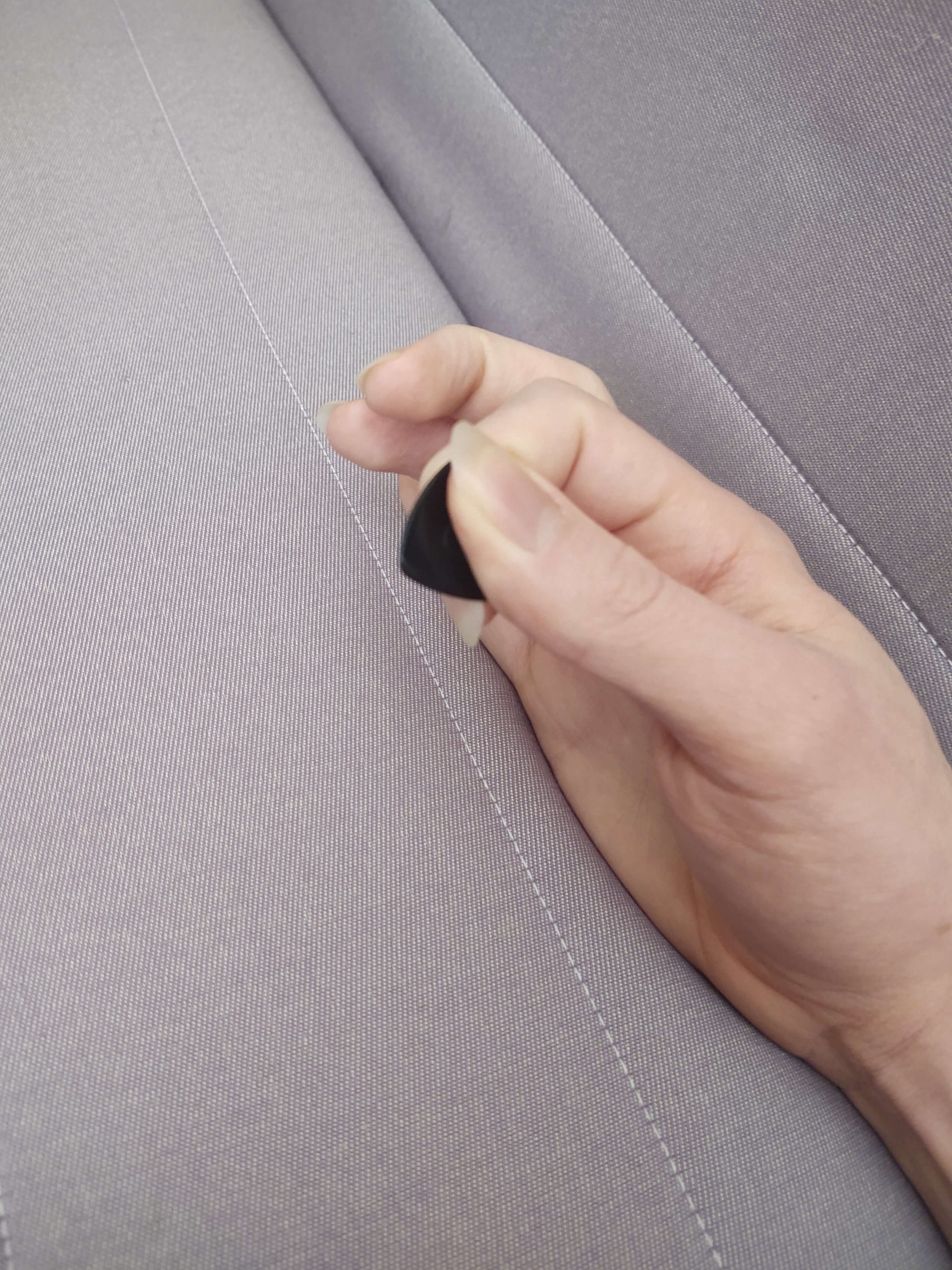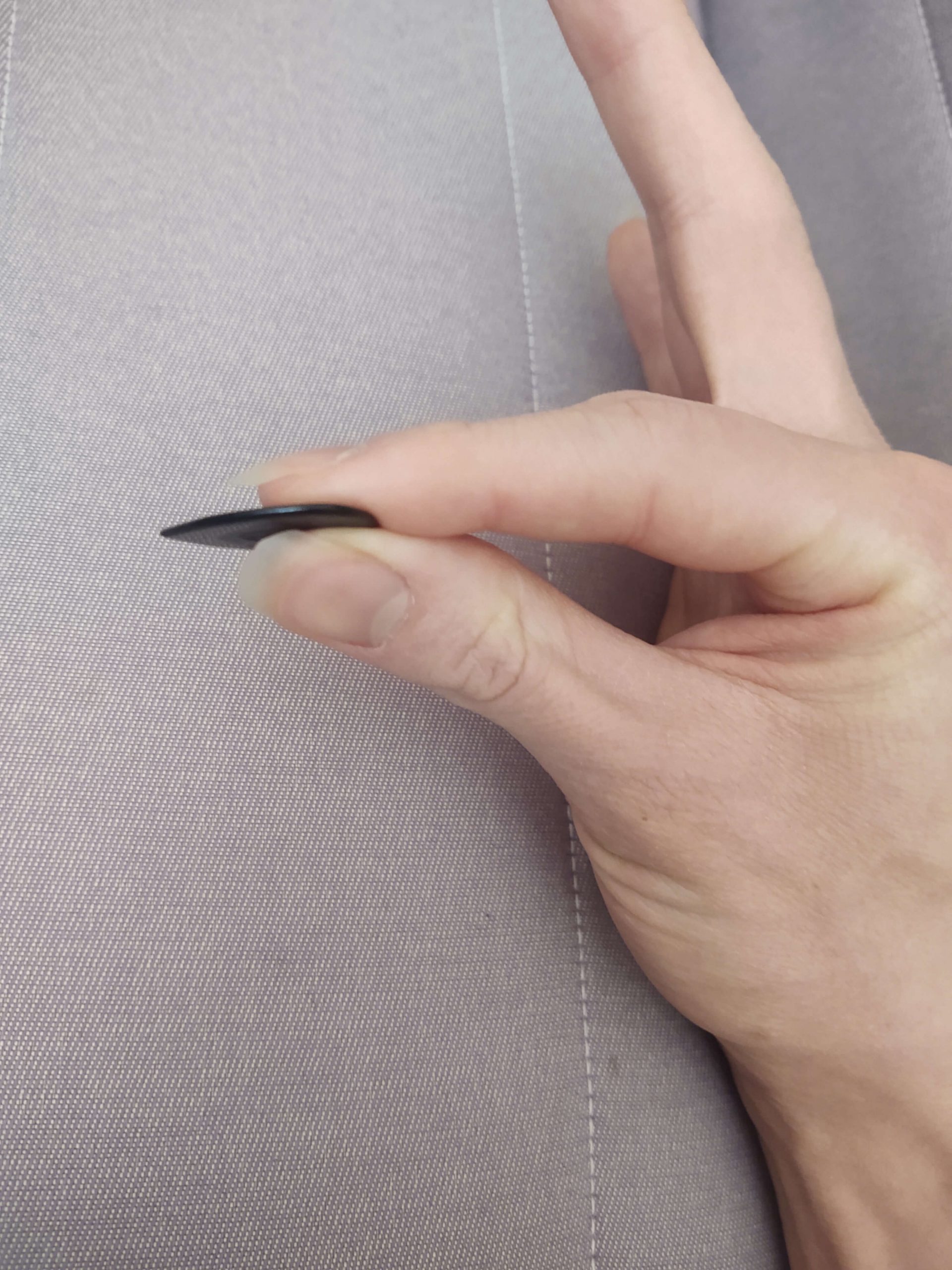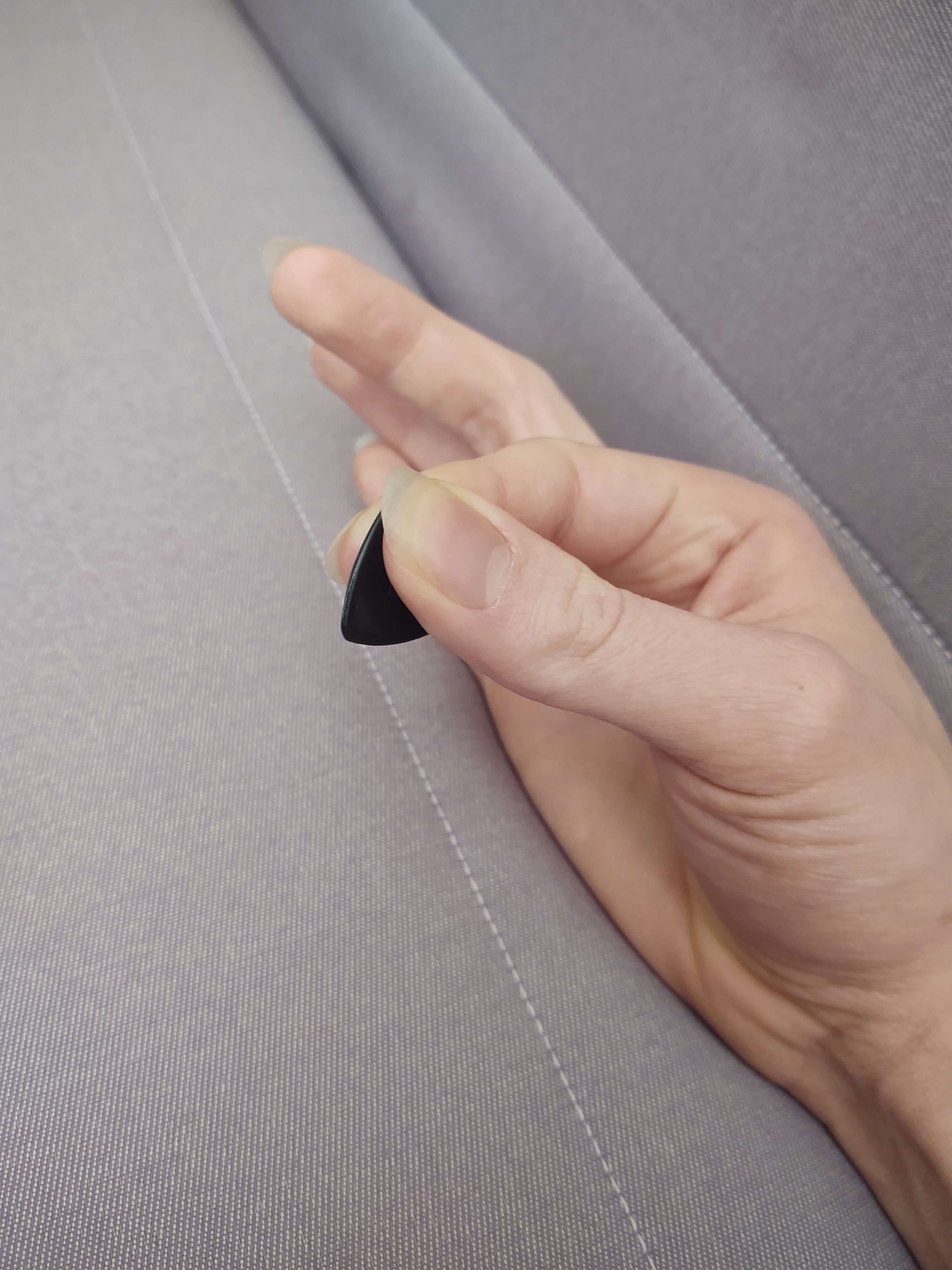Table of Contents
“Picking technique” is a term that gets thrown around a lot in the guitar community. It’s definitely something you need to understand if you want to improve your guitar picking accuracy and speed.
As a general rule guitar picking technique explains what you can do with your picking hand to optimize for picking accuracy.
You’ll learn what guitar picking techniques are, and which ones may best suit your musical style in this in-depth post on picking techniques.
Holding the guitar pick
Understanding picking technique starts with the guitar pick.
Holding the guitar pick is relatively subjective, but there are some best practices.
In my experience the best way to hold a guitar pick is with the “D” Shape.
That looks like this:


You simply create a “D” shape as shown in the phot, and slide your guitar pick in between your fingers, creating a 90 degree angle where the thumb and guitar pick meet.
This contradicts the most common way I’ve seen beginner and intermediate guitarists hold their guitar picks, which looks like this:


Using the “D” shape will give you a better grip on the guitar pick, leading to better picking accuracy.
Fingerstyle/ Finger Picking
We can’t talk about picking technique without mentioning fingerstyle!
Fingerstyle originated with classical guitar. It can be performed exclusively with fingers, or with a thumb pick alongside your fingers.
PIMA Method
One of the most popular methods for understanding fingerstyle is the PIMA method. The PIMA method is a way to organize your fingerstyle patterns by fingering.
Here’s an in-depth guide on the PIMA method, from Fender’s website.
Fingerstyle Example
This is Tommy Emmanuel, one of the best fingerstyle guitarists on the planet!
Strumming
Strumming is probably a term that you’re already familiar with.
A strum happens when you run your guitar pick or fingers through multiple strings at the same time, creating harmony.
Strumming Patterns
When strumming you’ll usually work with a strumming pattern. This is where you’ll play the same rhythmic pattern, using downward strums and upward strums, for each measure of music.
You’ll usually have a new strumming pattern for each section of the song, such as the chorus and verse.
Strumming example
Here’s Marty Schwartz, teaching some popular strumming patterns.
Alternate Picking
Alternate picking is simple: When you use a downstroke your next note will be an upstroke and vice versa.
Alternate picking is absolutely essential to learn as it is necessary for picking fast, and necessary for energy conservation as you pick multiple notes across multiple strings.
Alternate picking example
This technique was pioneered by John McLaughlin and Al Di Meola, but is well-known to be used by contemporary guitarists such as John Petrucci, Paul Gilbert, Andy James, and Martin Miller.
Here’s Martin Miller demonstrating alternate picking.
Tremolo Picking
Tremolo picking is just alternate picking a single note at a fast tempo for a set amount of time.
It’s most commonly found in metal guitar, but it’s used in any fast-paced genre of music, such as surf rock.
Tremolo picking example:
Leather Rebel by Judas Priest is a classic example of tremolo picking.
Downpicking
Downpicking refers to a consistent use of downstrokes.
As a general rule downpicking is used in metal and rock to aggressively attack a single string repeatedly, giving those notes a louder, heavier sound.
Downpicking example
Some of my favorite Downpickers are James Hetfield from Metallica, and John Browne from Monuments.
Hybrid Picking
Hybrid picking is the use of a guitar pick and finger picking at the same time.
This is usually done with the guitar pick being held in it’s standard “D” shape position, and using the pick in conjunction with the other three fingers (Middle, Ring, and Pinky).
Hybrid picking example
Gustavo Assis-Brasil is a hybrid picking master. He has written books about the technique, and teaches it regularly.
Economy Picking
Economy picking happens when you follow the economy of motion with your picking hand.
For example, if you end on one string with a downstroke, you’ll play the string beneath it with a downstroke. This directly opposes alternate picking, because you’d play the next string with an upstroke if you were alternate picking.
Economy picking only works with odd picking patterns, but it’s extremely helpful for playing difficult odd note phrases.
Economy picking is often combined with hybrid picking and legato as well.
Economy picking guitar lesson
Economy picking example
Frank Gambale is the pioneer of economy picking.
He consistenly applies economy picking throughout this entire song. You can find more examples on his personal YouTube channel, FGTV.
Sweep Picking
Sweep picking is a sub-technique of economy picking.
You sweep by moving your picking hand up and down in a “sweep motion”, which makes it easy to pick a single note per-string with a single downward movement, upward movement, or combination of downward and upward movements.
Sweep picking lesson
Here’s my YouTube lesson for sweep picking.
Sweep picking example
Jason Becker is a famous Neoclassical guitarist, and his music regularly uses sweep picking.
Summary: Guitar Picking Techniques
Picking technique may seem complicated, but you only need to learn the picking techniques that work best for your playing style.
Take a good look at what you like to play, and focus on the picking technique that will help you excel the most in your personal style.
Let me know in the comments which picking technique you plan on working on next!



